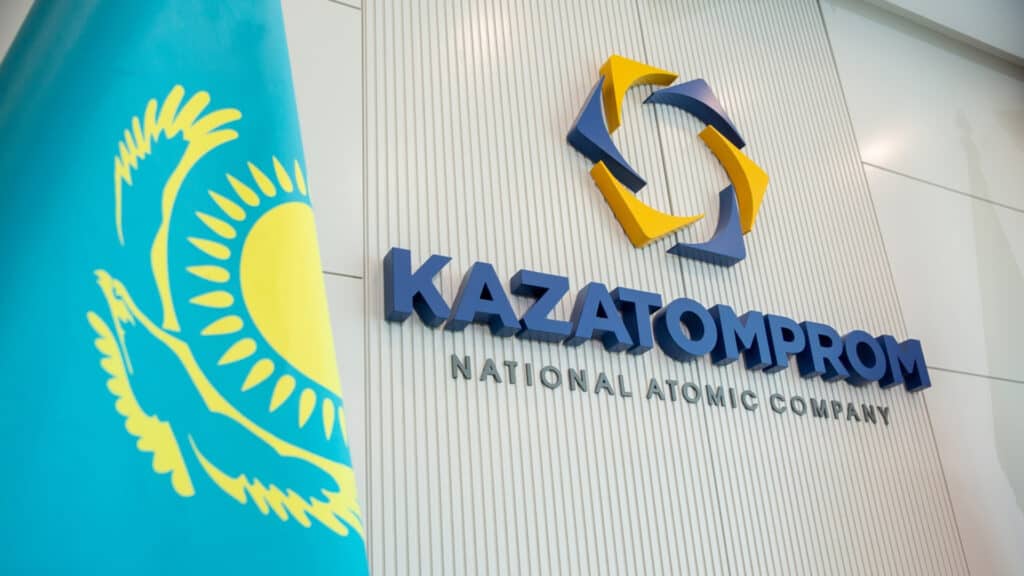US security probe into foreign uranium sparks response from top producer Kazatomprom

Kazatomprom, Kazakhstan’s state-owned nuclear company, has released a response to the U.S. Department of Commerce’s Bureau of Industry and Security regarding an ongoing investigation into the national security risks posed by imports of processed critical minerals and their derivatives. The investigation, announced in April, sought public comments by May 16, 2025.
The probe’s scope
The probe is aimed at assessing whether the U.S. is vulnerable to what the department described as «predatory economic, pricing, and market manipulation strategies» by countries that process and export critical minerals to the U.S. While not officially stated, the investigation appears to have been prompted by China’s recent export restrictions on rare earth elements, which are vital to U.S. defense and civilian industries.
The investigation covers rare earth elements, uranium and other strategic metals such as titanium and copper — materials essential to renewable energy development, high-tech industries and dual-use applications.
Kazakhstan is the world’s largest uranium producer, accounting for more than 40% of global output. However, in 2023, Canada was the top source of uranium imports to the U.S., with a 27% share. Kazakhstan and Australia, which hold the world’s largest uranium reserves, each supplied 22%, sharing the second and third spots. Kazakhstan’s annual uranium exports to the U.S. in 2022-2023 were estimated at approximately 10 million pounds or about 3,800 tons. Russia’s uranium made up 12% of U.S. imports, while Uzbekistan accounted for 10%.
Kazatomprom’s response
In its statement, Kazatomprom highlighted the investigation’s wide scope, arguing that including uranium alongside more than 50 other critical minerals and rare earths could lead to vague or inconclusive outcomes.
The company said it is unclear how the U.S. Department of Commerce will conduct a thorough investigation within tight deadlines, given the complexity of suppliers, supply chains, domestic industry sectors, import trends and the varied uses of each mineral. Even if the investigation proceeds with its broad scope, Kazatomprom argued that uranium stands apart from the other materials under review, primarily due to its unique role as nuclear fuel, which is fundamentally different from the applications of other critical minerals included in the probe.
Kazatomprom further noted that the U.S. has previously conducted two investigations into uranium imports, in 1989 and 2018, under Section 232 of the Trade Expansion Act of 1962. Neither led to the implementation of import restrictions or tariffs under national security provisions.
Kazatomprom maintains that uranium imports from Kazakhstan do not pose a threat to American producers, noting that U.S. uranium output has remained stable for years, while prices for Kazakh uranium have reflected normal market fluctuations.
The company argues that the U.S. investigation should focus on the country’s excessive reliance on enriched uranium from geopolitical rivals, not on uranium concentrate imported from Kazakhstan, a partner nation. Kazatomprom warned that imposing tariffs or control measures on these imports could harm the competitiveness of the U.S. nuclear energy sector, where nuclear power plants must compete with other sources of electricity.
Kazakhstan vs. U.S. reserves
In 2023, total commercial uranium reserves in the U.S. rose to 152 million pounds (more than 58,000 tons), with nuclear plant owners and operators holding about 110 million pounds (over 42,000 tons). For comparison, Kazakhstan mined 23,300 tons in 2024. U.S. reserves, therefore, exceed Kazakhstan’s annual output by a substantial margin.
Kazatomprom also rejected allegations of market manipulation or the use of predatory pricing strategies. The company emphasized that uranium prices for U.S.-bound shipments rose from 2021 to 2023 in line with global market trends.
Much of Kazakhstan’s uranium is exported to the U.S. through international trading companies based in various countries. Additional volumes are sold by Kazatomprom’s foreign joint venture partners operating in Kazakhstan, who have the right to market their share of uranium freely on the global market.
The company further stated that it does not receive tax breaks, subsidies or other incentives from Kazakhstan’s government. The burden of Kazakhstan’s mineral extraction tax has increased in recent years.
Kazatomprom also expressed skepticism that the U.S. will be able to ramp up domestic uranium production sustainably in the short term. Although the U.S. ranks fourth globally in uranium reserves — behind Australia, Kazakhstan and Canada — many of its reserves are only economically viable at prices around $100 per pound. That figure is well above current market prices and higher than the production cost in other major uranium-producing nations.
This puts the U.S. at a competitive disadvantage, even as global uranium prices have risen from $46 per pound in 2022 to nearly $60.22 per pound by early 2024. Kazatomprom noted that although President Donald Trump is advocating for the development of new domestic uranium mines, significant time will be needed for capital investment, construction of new facilities and the establishment of supporting supply chains.
Trade Ministry’s stance
Kazakhstan’s Ministry of Trade and Integration echoed Kazatomprom’s concerns, urging the U.S. Department of Commerce to:
- Recognize that Kazakhstan’s exports of uranium, titanium, tantalum and beryllium do not pose a threat to U.S. national security; and
- Conclude that Kazakhstan, as a strategic partner and reliable supplier, should be definitively excluded from any import restrictions recommended under Section 232.
Kazatomprom’s financial statements show that in 2024, the U.S. ranked as the company’s fourth-largest buyer, with purchases totaling approximately $400 million, up from $334 million in 2023. China remained the top buyer, increasing its purchases to nearly $1.4 billion in 2024 from $1.1 billion the previous year. Russia followed with $540 million (up from $470 million), and Canada with $351 million (up from $287 million).
Despite strong annual earnings, Kazatomprom’s net profit declined in the first quarter of 2025, falling to approximately $237 million from $330 million during the same period in 2024. However, for the full year 2024, the company reported a net profit of $2.2 billion, a 95% increase year-on-year.
According to Kazatomprom’s profile on the Kazakhstan Stock Exchange (KASE), its ownership structure includes 62.99% held by Samruk-Kazyna, Kazakhstan’s sovereign wealth fund; 12.01% held by the Ministry of Finance; and the remaining 25% in free float, traded on the Astana International Exchange (AIX) and the London Stock Exchange (LSE).

